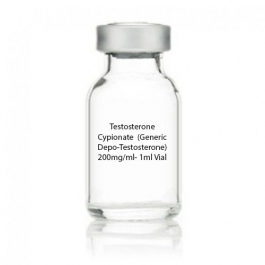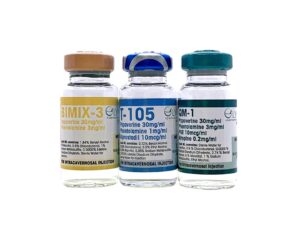All of the pricing includes the cost of the online visit and medication
Benefits of Testosterone Replacement Therapy
- Increased strength and energy
- Improvement of well being and mood
- Better concentration and cognitive function
- Improvement in libido
- Improvement in erectile dysfunction
- Increased muscle mass
- Preservation of bone mass
- Decrease in cardiovascular risk
New Industry Changing Solution For Andropause
No contract, you only pay for services upfront
A fraction of pharmacy costs
FSA and HSA accepted
What Is Andropause?
Andropause, also known as male menopause or late-onset hypogonadism, is a condition that affects men as they age and is characterized by a decline in testosterone levels. Testosterone is the primary male sex hormone responsible for regulating various physiological processes in the body, including muscle mass and strength, bone density, libido, mood, and energy levels.
Andropause typically occurs in men over the age of 40, although it can happen earlier or later in life. The decline in testosterone levels during andropause is gradual and can result in symptoms such as fatigue, decreased sex drive, erectile dysfunction, mood swings, depression, loss of muscle mass and strength, decreased bone density, and changes in body composition.
It’s important to note that not all men will experience andropause, and the severity of symptoms can vary widely among individuals. Diagnosis of andropause is typically based on symptoms, along with blood tests to measure testosterone levels. Treatment options for andropause may include lifestyle changes, hormone replacement therapy (HRT) to supplement testosterone levels, and management of specific symptoms.
If you suspect you may be experiencing symptoms of andropause, it’s important to consult a qualified healthcare provider for an accurate diagnosis and appropriate management plan tailored to your individual needs.
How Does TRT Work for Andropause?
Testosterone replacement therapy (TRT) is a treatment option that can help alleviate the symptoms of andropause by supplementing low testosterone levels in men. TRT involves the use of exogenous testosterone, which is administered through various forms such as injections, patches, gels, or pellets, to raise testosterone levels in the body.
Here are some ways in which TRT can help with andropause:
- Relief from Symptoms: TRT can effectively relieve many of the symptoms associated with andropause, such as fatigue, decreased sex drive, erectile dysfunction, mood swings, and depression. By replenishing low testosterone levels, TRT can help improve overall well-being and quality of life.
- Improved Sexual Health: Testosterone is crucial for maintaining sexual health in men, and TRT can help improve libido, sexual desire, and erectile function. It may also lead to increased satisfaction and enjoyment of sexual activity.
- Increased Muscle Mass and Strength: Testosterone plays a vital role in maintaining muscle mass and strength. TRT can help improve muscle mass, strength, and physical performance, which may decline with age and during andropause.
- Bone Health: Testosterone is important for maintaining bone health and density in men. TRT can help improve bone mineral density and reduce the risk of osteoporosis, a condition characterized by weakened bones that can be more common in older men.
- Mood and Well-being: Low testosterone levels can impact mood, causing symptoms such as irritability, mood swings, and depression. TRT can help improve mood and overall well-being, leading to a better quality of life.
- Body Composition: Testosterone plays a role in regulating body fat and muscle mass. TRT may help decrease fat mass and increase lean muscle mass, leading to improved body composition.
It’s important to note that TRT should be prescribed and monitored by a qualified healthcare provider, as it is not suitable for everyone and may have potential risks and side effects. A proper diagnosis of andropause, based on symptoms and blood tests, is essential before initiating TRT. The treatment plan, including the form, dose, and duration of TRT, should be tailored to the individual needs and closely monitored by a healthcare provider to optimize the benefits and minimize risks.
How Much Weight Can You Lose on Semaglutide?
Before semaglutide was approved by the FDA, four clinical trials were performed to look at the safety and efficacy of the medication. Each trial lasted 68 weeks and more than 2,600 patients received semaglutide, while more than 1,500 received placebo.
One of the clinical trials looked at adult patients without diabetes. The average age of patients in the study was 46 years, and 74 percent of the patients were female. The average body weight at the beginning of the study was 231 pounds. Overall, the patients who took semaglutide lost 12.4 percent of their original body weight compared to those who took the placebo.
Another trial looked at patients with type 2 diabetes. The average age for the study was 55 years, and 51 percent of the patients were female. Overall, the average body weight was 220 pounds. Compared to those who took placebo, the patients that took semaglutide lost 6.2 percent of their initial body weight.
Finally, a study from the New England Journal of Medicine treated 1961 adults with a BMI of 30 or greater with either semaglutide or placebo. Of the 1306 patients taking semaglutide in the study, one third of them lost at least 20 percent of their baseline weight. These results are comparable to those after bariatric surgery (specifically the sleeve gastrectomy). The results of these studies all show promising potential for weight loss when using semaglutide.
Side Effects of TRT
Like any medical treatment, testosterone replacement therapy (TRT) may have potential side effects. These can vary depending on the individual, the form and dosage of TRT used, and other factors. It’s important to note that TRT should be prescribed and monitored by a qualified healthcare provider, and any potential side effects should be discussed with a healthcare professional.
Here are some potential side effects of TRT:
- Acne: TRT can increase oil production in the skin, which may lead to acne breakouts, especially in individuals who are prone to acne.
- Fluid Retention: TRT may cause fluid retention, which can result in bloating, swelling, or an increase in blood pressure.
- Polycythemia: TRT can stimulate the production of red blood cells, leading to an increase in hematocrit levels. This can result in a condition called polycythemia, which may increase the risk of blood clots.
- Prostate Issues: There is a potential risk that TRT may worsen symptoms of benign prostatic hyperplasia (BPH) or increase the risk of prostate cancer in some men. Regular monitoring of prostate health is important during TRT.
- Testicular Shrinkage: TRT can lead to a decrease in testicular size due to the suppression of natural testosterone production. This is usually temporary and reversible once TRT is discontinued.
- Hormonal Imbalance: TRT can disrupt the body’s natural hormonal balance, leading to potential side effects such as changes in cholesterol levels, increased estrogen levels, and decreased fertility.
- Skin Irritation: Some forms of TRT, such as patches or gels, may cause skin irritation or rash at the application site.
- Sleep Apnea: TRT may worsen sleep apnea, a condition characterized by interrupted breathing during sleep, in individuals who are already at risk for this condition.
- Mood Changes: TRT can affect mood and behavior in some individuals, leading to mood swings, irritability, or changes in aggression levels.
- Cardiovascular Risk: There is evidence suggesting that TRT may increase the risk of cardiovascular events, such as heart attacks and strokes, particularly in older men or those with pre-existing cardiovascular conditions. However, this risk is still debated among healthcare professionals.
It’s important to remember that not all individuals will experience side effects from TRT, and the benefits of TRT may outweigh the risks in certain cases. Close monitoring and regular follow-ups with a healthcare provider are crucial during TRT to manage any potential side effects and ensure the safe and effective use of the therapy.
Risks Associated with TRT
Testosterone replacement therapy (TRT) is generally considered safe when prescribed and monitored by a qualified healthcare provider. However, like any medical treatment, TRT carries some potential risks. It’s important to discuss these risks with a healthcare professional before starting TRT, and to undergo regular monitoring throughout the course of treatment. Here are some potential risks associated with TRT:
- Hormonal Imbalance: TRT can disrupt the body’s natural hormonal balance, leading to potential side effects such as changes in cholesterol levels, increased estrogen levels, and decreased fertility. Regular monitoring of hormone levels and appropriate dosage adjustments are important to mitigate this risk.
- Cardiovascular Risk: There is evidence suggesting that TRT may increase the risk of cardiovascular events, such as heart attacks and strokes, particularly in older men or those with pre-existing cardiovascular conditions. However, this risk is still debated among healthcare professionals, and individual risks should be assessed on a case-by-case basis.
- Prostate Issues: TRT may worsen symptoms of benign prostatic hyperplasia (BPH) or increase the risk of prostate cancer in some men. Regular monitoring of prostate health, including prostate-specific antigen (PSA) levels, is important during TRT.
- Polycythemia: TRT can stimulate the production of red blood cells, leading to an increase in hematocrit levels. This can result in a condition called polycythemia, which may increase the risk of blood clots.
- Testicular Shrinkage: TRT can lead to a decrease in testicular size due to the suppression of natural testosterone production. This is usually temporary and reversible once TRT is discontinued.
- Skin Irritation: Some forms of TRT, such as patches or gels, may cause skin irritation or rash at the application site.
- Sleep Apnea: TRT may worsen sleep apnea, a condition characterized by interrupted breathing during sleep, in individuals who are already at risk for this condition.
- Mood Changes: TRT can affect mood and behavior in some individuals, leading to mood swings, irritability, or changes in aggression levels.
- Allergic Reactions: In rare cases, some individuals may experience allergic reactions to TRT formulations, such as skin rash, itching, or swelling.
It’s important to note that the risks associated with TRT should be weighed against the potential benefits in each individual case. TRT should only be prescribed and monitored by a qualified healthcare provider, and any concerns or side effects should be promptly discussed with a healthcare professional for appropriate management.
How Much Does TRT Cost?
The cost of testosterone replacement therapy (TRT) injections can vary depending on various factors such as the location, healthcare provider, dosage, and duration of treatment. TRT injections typically require a prescription from a qualified healthcare provider and may not be available over the counter.
In the United States, the cost of TRT injections can range from $100 to $150 or more per injection, depending on the specific formulation, brand, and dosage. The frequency of injections can vary, with some individuals receiving injections weekly, bi-weekly, or monthly, depending on their treatment plan.
It’s important to note that TRT may also require additional costs for initial consultations, blood tests, follow-up appointments, and monitoring of hormone levels. Additionally, the cost of TRT may also vary based on insurance coverage, as some insurance plans may partially or fully cover the cost of TRT injections, while others may not.
It’s recommended to consult with a qualified healthcare provider to discuss the specific costs associated with TRT injections, as well as any potential insurance coverage or financial assistance options that may be available.
How Does Testosterone Cypionate Help With TRT?
Testosterone cypionate is a form of testosterone replacement therapy (TRT) that can be used to address the symptoms of andropause, also known as male menopause. Andropause is a condition characterized by a decline in testosterone levels in men as they age, which can result in various physical, sexual, and emotional symptoms. Here are some ways in which testosterone cypionate may help with andropause:
- Increases testosterone levels: Testosterone cypionate is a synthetic form of testosterone that can be administered via intramuscular injection. It helps increase testosterone levels in the body, which can help address the hormonal imbalance associated with andropause.
- Improves sexual health: Testosterone is an important hormone for male sexual health. Testosterone cypionate may help improve libido, erectile function, and overall sexual performance in men experiencing andropause-related sexual dysfunction.
- Enhances mood and energy levels: Low testosterone levels can lead to mood swings, fatigue, and decreased energy levels. Testosterone cypionate may help improve mood, increase energy levels, and reduce fatigue in men with andropause, leading to an overall improvement in quality of life.
- Supports bone health: Testosterone is important for maintaining bone health in men. Testosterone cypionate may help improve bone density and reduce the risk of osteoporosis, which is a common concern in aging men.
- Increases muscle mass and strength: Testosterone is an anabolic hormone that plays a role in muscle growth and strength. Testosterone cypionate may help increase muscle mass and strength, which can counteract the loss of muscle associated with andropause.
- Improves cognitive function: Testosterone has been shown to play a role in cognitive function, including memory and concentration. Testosterone cypionate may help improve cognitive function in men with andropause-related cognitive decline.
It’s important to note that testosterone cypionate should be used under the guidance of a qualified healthcare professional and in accordance with appropriate dosing and monitoring protocols. The benefits and risks of testosterone replacement therapy should be carefully considered on an individual basis, taking into account factors such as age, overall health, and medical history.
What Are General Dosing For Testosterone Cypionate?
The dosing for testosterone cypionate can vary depending on various factors, such as the individual’s age, overall health, and the severity of testosterone deficiency. It is crucial to follow the dosing instructions provided by a qualified healthcare professional. The general dosing recommendations for testosterone cypionate typically fall within the following ranges:
For adult males with hypogonadism (testosterone deficiency):
- Initial dose: 50 to 400 mg administered every 2 to 4 weeks via intramuscular injection.
- Maintenance dose: 50 to 200 mg administered every 2 to 4 weeks, depending on the individual’s response and blood testosterone levels.
For other conditions, such as delayed puberty or transgender hormone therapy, dosing may differ and should be tailored to the specific needs of the patient, under the guidance of a qualified healthcare professional.
It’s important to note that testosterone cypionate is a prescription medication and should only be used as directed by a qualified healthcare professional. The dosing may vary based on individual factors, and regular monitoring of testosterone levels, along with potential side effects, is important to ensure safety and effectiveness. Do not alter the dosing or frequency of testosterone cypionate without consulting a healthcare professional.
Cutting edge treatment for andropause
Most patients notice significant increase in testosterone levels
A natural means to supplement testosterone
Testosterone Cypionate
200mg/ml (30ml)
Contact us for pricing per injection or therapy.

- Increases testosterone levels
- Improves sexual health
- Enhances mood and energy levels
- Supports bone health
- Increases muscle mass and strength
- Improves cognitive function
The Testosterone Replacement Therapy Injections target weight loss by administering weekly injections with dosages that vary by patient weight (mg/kg).
TriMix ED Injections
Papaverine, Phentolamine, and Alprostadil
Contact us for pricing

- Dehydration
- Fatigue
- Headache
- Weakness
- Muscle aches
- Stomach pain
- Joint pain
Phentermine & Naltrexone oral tablets target weight loss by regulating appetite and burning fat where dosages vary by patient weight and length of therapy (mg/kg).
Signs of Andropause
Obesity
Andropause, also known as male menopause or late-onset hypogonadism, is a condition characterized by a gradual decline in testosterone levels in men as they age. It typically occurs in middle-aged to older men, usually starting in their 40s or 50s. Here are some signs and symptoms that may be indicative of andropause:
- Sexual symptoms: Decreased libido (sex drive), erectile dysfunction (difficulty achieving or maintaining erections), reduced spontaneous morning erections, and overall changes in sexual function may be signs of andropause.
- Physical symptoms: Fatigue, reduced muscle mass and strength, increased body fat, decreased bone density, hot flashes, and decreased physical stamina or endurance may be associated with andropause.
- Emotional symptoms: Mood swings, irritability, depression, anxiety, decreased motivation, and changes in overall emotional well-being may be signs of andropause.
- Cognitive symptoms: Reduced cognitive function, including memory loss, difficulty concentrating, and decreased mental sharpness, may be associated with andropause.
- Sleep disturbances: Insomnia or changes in sleep patterns, such as difficulty falling asleep or staying asleep, restless sleep, or increased sleepiness during the day, may be signs of andropause.
- Other symptoms: Increased body fat, decreased facial or body hair growth, gynecomastia (enlarged breasts), and reduced testicle size may also be signs of andropause.
It’s important to note that these symptoms can have multiple causes, and not all men will experience all of these symptoms during andropause. Additionally, the severity and duration of symptoms may vary from person to person. If you suspect you may be experiencing andropause, it’s important to consult a qualified healthcare professional for proper evaluation, diagnosis, and management. Hormone replacement therapy, including testosterone replacement therapy, may be considered as a treatment option for managing symptoms associated with andropause, but it should be prescribed and monitored by a healthcare professional.
- Difficulty in sleeping
- Sleep apnoea
- daytime drowsiness
- Back and/or joint pains
- Excessive sweating
- Intolerance to heat
- Infections in skin folds
- Fatigue
- Depression
- Feeling of shortness of breath (dyspnoea)






